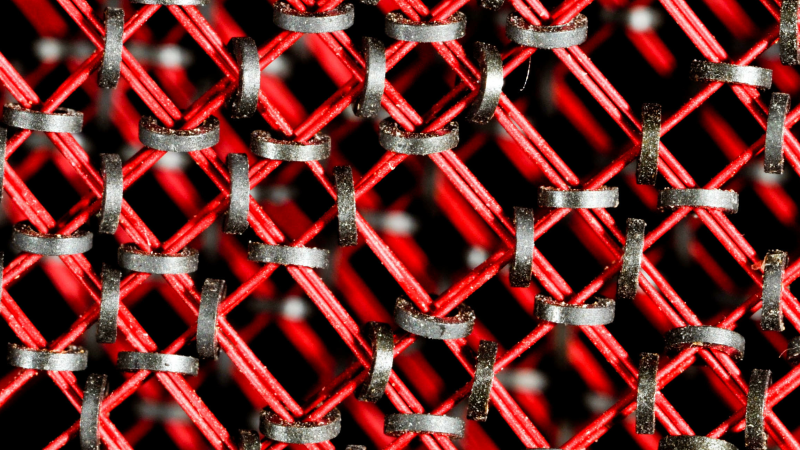Join us on Wednesday, November 3 at noon Pacific for the Retro Memory Hack Chat with Andy Geppert!
With how cheap and easy-to-integrate modern memory chips have become, it’s easy to lose track of the fact that it wasn’t too long ago that memory was the limiting factor in most computer designs. Before the advent of silicon memory, engineers had to make do with all sorts of weird and wonderful technologies just to provide a few precious bytes of memory. Things like intricate webs of wires spangled with ferrite cores, strange acoustic delay lines, and even magnetic bubbles were all tried at one time or another. They worked, at least well enough to get us to the Moon, but none would prove viable in the face of advancements in silicon memory.
That doesn’t mean that retro memory technology doesn’t have a place anymore. Some hobbyists, like Andy Geppert, are keeping the retro memory flame alive. His Core 64 project puts a core memory module in the palm of your hand, and even lets you “draw” directly to memory with a magnet. Andy learned a few tricks along the way to that accomplishment, and wants us all to appreciate the anachronistic charm of retro memory technologies. Stop by the Hack Chat to talk about your memories of memory, or to just learn what it used to take to store a little bit of data.
 Our Hack Chats are live community events in the Hackaday.io Hack Chat group messaging. This week we’ll be sitting down on Wednesday, November 3 at 12:00 PM Pacific time. If time zones have you tied up, we have a handy time zone converter.
Our Hack Chats are live community events in the Hackaday.io Hack Chat group messaging. This week we’ll be sitting down on Wednesday, November 3 at 12:00 PM Pacific time. If time zones have you tied up, we have a handy time zone converter.















My all time favorite obsolete memory type is the William’s tube, an electrostatic memory that stored bits as tiny charges on the face plate of a cathode ray tube. In the pioneer days of computing (1940’s thru early 1950’s) this device held sway by being the only practical random access memory. It had a reputation for flakiness that was the stuff of legends. IBM managed to get their version of device working well enough that they used it in their 701 36-bit computers. Due to its proclivity for flipping bits, early 701 users would run important calculations twice and compare the results. The 72 CRTs that made up the 2K x 36-bit memory were visible through the glass doors of the enclosure. During its inaugural demonstration to the press, photographers’ flash bulbs disturbed the memory, so the glass doors had to be covered with sheets of paper.
I swoon! I cut my teeth on the C100, I used to have souvenirs but house downsizing meant getting rid of my computer museum.
I still have a plane of memory somewhere…badge?
I might still have some pocket ref handbooks.
I worked on two 100’s, one 75, one 150.
Then an 8200 and an 8250. Imos, irx, itx…
Then onto IBM (sorry for swearing).
Neat/3 knocked spots off RPG.
I started on cobol, learned neat/3 then self-taught level2 and machine code. I could write programs (for fun in machine code) 64 Move a to b left to right, 65 move a to b right to left, etc. Mvar, mveb etc still with me.
Without using the operating system – hand-punched paper tape, using the console etc.
Cobol is embedded in my DNA, as is neat/ and level2.
Any jobs going?
I miss it all :-(
Those were the days! :-)
My favorite retro memory was the acoustic delay line. A coil of (usually silver) wire that had an ultrasonic traducer at each end and sent an acoustic (torsion) wave through the wire. Bits out of one end were flipped if needed then sent back into the wire creating a serial memory.
I want to re-create something similar. I was hoping to use 2 of 64us delay lines out of an old PAL TV. They should give a theoretical 160 bits (20 Bytes) each based on a bandwidth of 5MHz and a delay of 64us. They’re getting hard to buy now.
If they work out then I would want to use them to make a 2 bit serial computer with a whopping 40 Bytes of RAM. Or more realistically x words of RAM. A couple of bits for instruction decode and whatever makes sense for the data length.
Elementary Electronics once had an audio delay line using a garden hose.
People forget, but the earliest cheap memory for hobbyists was long shift registers. I gather the first TV Typewriter used them. Around 1974, there were slow scan TV converters, completely dependent on surplus shift registers.
If solid state RAM hadn’t arrived, and gotten “cheap”, home computers would have been different, or later.
I have one of these if anyone is interested in some pics…
My favorite obsolete memory was…
I forgot!
B^)